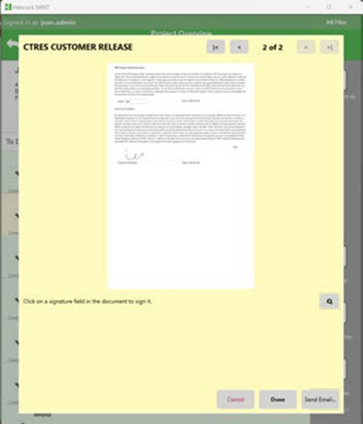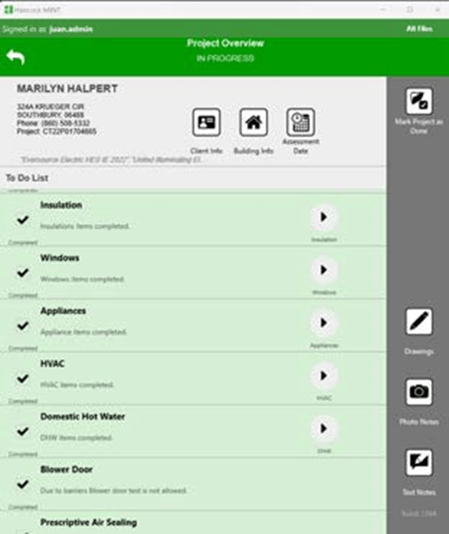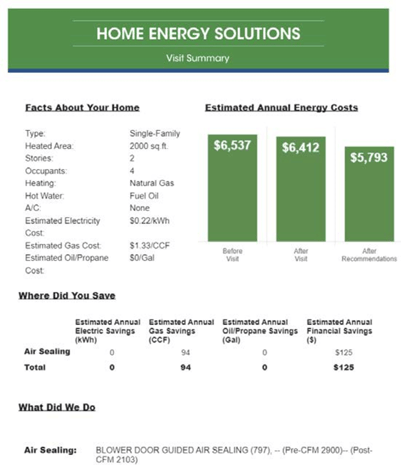Audits
.jpeg?width=533&height=2000&name=MINT%20infographic%20(1).jpeg)
Growing your program requires the right audits.
Achieving the scale that is required to properly allocate the massive amount of IRA and HOMES funding now available takes partnerships with many key stakeholders such as utilities, contractors, trade ally partners, trade associations, community action organizations, and financing institutions. These partners perform audits, interact with clients, deliver services and install measures, and identify opportunities for home environment improvement.
Depending on the funding and program type, program managers typically support two types of home audits: a priority audit (which uses a regional priority list to determine the measures for a home) and a weatherization audit (a site-specific energy audit that complies with DOE standards sometimes referred to as home energy assessments.)
Priority Audit vs Weatherization and Home Energy Assessments
Priority Audit vs Weatherization and Home Energy Assessments
When to Use a Priority Audit or Weatherization Audit
Priority Audit:
☑ Purpose: Use of a regional Priority or Assessment list
☑ When: Targeted Assessment
☑ What: Overview of the property
☑ Focus: Identifying eligibility and basic needs
☑ Benefits: Cost-effective and time-saving
Weatherization Audit:
☑ Purpose: In-depth Analysis
☑ When: Qualified participants selected
☑ What: Thorough examination of the property
☑ Focus: Energy efficiency and health & safety concerns
☑ Benefits: Detailed recommendations for retrofitting
Priority Audit or Site Visit
Priority Audits are visits in which a high-level program eligibility assessment or an energy evaluation
is performed using a checklist or guide. Eligibility assessments may include:
- Identification of program-covered home conditions (such as home health measures, water-saving measures, mold identification, or window damage), and
- Installation of incentive-based measures (such as bulb or thermostat replacements). These types of measures can often be identified and remediated immediately onsite.
Consider that during a visit, to ensure eligibility, they will need to:
☑ Validate the client’s information
☑ Collect a customer release signatures to perform the audit
☑ Collect Billing signature in case there are rebates or measures identified that would require invoicing or payment
☑ Get approval for releasing scores to the Department of Energy
☑ Identify specific conditions within the residence matching your program measures and priorities.
☑ Suggest Measures and services that meet the clients needs and align to the program priorities.

If programs utilize data collection on paper or complex spreadsheets, the quality of the audit and safety of private client data is directly related to the experience of the auditor. This results in program risk.
Identify a tool for auditors which you can customize to your exact program. This can ensure compliance with the collection of signatures and verification of paperwork prior to performing audit activities. Signature collection will be digital and copies of all of the forms will be sent to the client and stored centrally for the Program Manager to verify.
Weatherization and home energy assessments are often the backbone of energy efficiency programs. These in- depth visits are designed to provide personalized feedback on energy usage in the customer’s home, estimate potential savings based on industry-
standard modeling practices, and create recommendations for energy efficiency products and services to maximize the home health and energy improvements for the client and across all programs.
In the past, energy audits required advanced training and were performed by those with building science degrees. However, these skills are in demand, and it is important to consider how to perform these jobs with a wider variety of workers while still ensuring accuracy and following program rules.
With new mobile applications, such as Hancock MINT, a Program Manager can build a step- by-step guide that will check all data entered in real-time. Stakeholders can perform energy assessments without an advanced building science degree.
Selecting an Audit Tool
Energy Efficiency Program tools for stakeholders for priority audits should
☑ Collect client signatures during the visit.
☑ Provide step-by-step priority audits or weatherization audits.
☑ Calculate energy savings.
☑ Supply recommended measures and costs based on program availability and eligibility.
☑ Export a kitchen table-ready conversation report at the end of the audit.
Smart programs select an integrated program solution with simplified data collection to drive weatherization energy modeling. To select a weatherization enablement tool to support your stakeholders, look for a mobile application that:
☑ Complies with federal residential energy software standards
☑ Calculates energy savings from duct weatherization by using BPI Distribution System Efficiency
☑ Supplies an energy savings model that includes
- Nearest Weather Location
- Building Information, dimensions/ area, Floor #, walls, attic, Windows/Doors, Basement
- Air Infiltration
- Heating/Cooling
- Lighting
- Distribution
- Refrigeration
- DHW (Domestic Hot Water)
☑ Supports annual modeled energy savings for Electricity, Natural Gas, Heating Oil, Propane, Wood, and Biomass
☑ Recommends measures and costs based on program availability and eligibility, with
- Detailed list of products to be installed in the home, including quantities and prices.
- Total job cost, incentives, and customer responsibility.
- Required deposit payment from the customer.
- Deemed and modeled energy savings.
- Pollution reduction data.
☑ Manages workflow for quality assurance, inspection, and upload of images and videos
☑ Outputs reports and instructions needed for stakeholder installations, and reimbursements
from measures completed.
Kitchen Table Conversations
One of the most important moments in the Energy Service Program life-cycle is when a clie nt is shown the results from their audit. This is often referred to as a “kitchen table” conversation.
nt is shown the results from their audit. This is often referred to as a “kitchen table” conversation.
A kitchen table report enables auditors to consistently communicate findings and recommendations to clients and present data-driven insights on energy usage, efficiency measures, potential savings, and other relevant factors. This level of detail empowers auditors to have meaningful discussions with clients, explaining complex concepts in a clear and understandable manner.
Client Data Security
As soon as a client opts into your program, they are entrusting you with their personal data.
Your program has the responsibility of ensuring the security of their information. This includes protecting sensitive information from unauthorized access, breaches, or misuse. The program must adhere to stringent security standards and compliance regulations to safeguard the clients’ data, such as personally identifiable information and financial records. All solutions that are used with the clients data should include measures such as encryption, secure data storage, access controls, regular audits, and employee training on data protection protocols.
Conclusion
Successful Home Energy Services Programs use a single flexible and secure integrated software solution designed from beginning to end to include all of the tools needed for success throughout the program management chain --- from program design to data collection, application, approval, and evaluation. They enable an exceptional user and program experience for clients, stakeholders, and Program Manager administrators.
